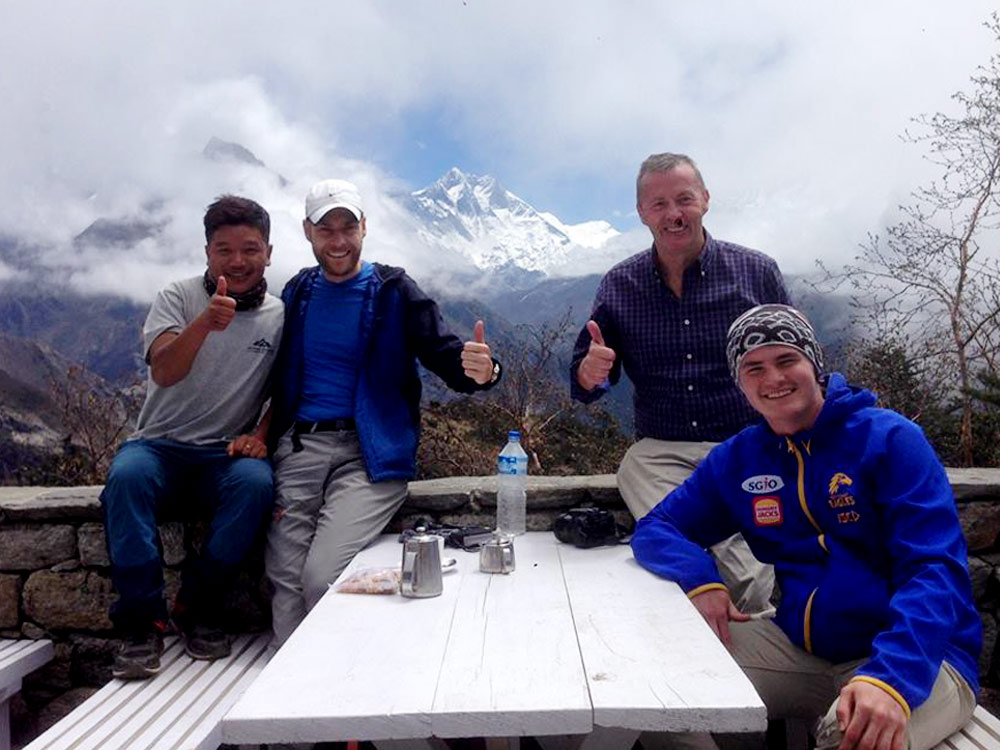
Trekking Checklist- Equipment
What are the types of equipment to be carried with us on the mountain? This might be one of the most frequent questions to be asked to the trekking operator.
Sometimes, when we lack some equipment in the mountain in case of the sudden incident, we may have to face terrible unforeseen circumstance. Actually, we don’t want to see it but sometimes unexpectedly, it occurs. All the required types of equipment are even not available in the mountain while we are on the trip. So, all the required types of equipment are to be carried because we are going for an adventure on the mountain. The wild nature may not be friendly to us all the time. So, we need to pack up all these following equipment for our trekking trip in the mountain.

Head
Bandana or headscarf, also useful for dusty conditions
Warm hat that covers your ears (wool or synthetic)
Headlamp with extra batteries and bulbs
Sunglasses with UV protection
Upper Body
Polypropylene shirts (1 half sleeve and 2 long sleeves)
Light and expedition weight thermal tops
Fleece wind-stopper jacket or pullover
Waterproof (preferably breathable fabric) shell jacket
Down vest and/or jacket
Gore-Tex jacket with hood, waterproof and breathable
Hands
1 pair of lightweight poly-liner gloves.
1 pair of lightweight wool or fleece gloves
1 pair of mittens, consists of 1 Gore-Tex over mitt matched with a very warm polar-fleece mitt liner (seasonal)
Lower Body
Non-cotton underwear briefs
1 pair of Hiking shorts
1 pair of Hiking trousers
1 pair of lightweight thermal bottoms (seasonal)
1 pair of fleece or woolen trousers
1 pair of waterproof shell pants, breathable fabric
Feet
2 pairs of thin, lightweight inner socks
2 pairs of heavy poly or wool socks
1 pair of Hiking boots with spare laces (sturdy soles, water resistant, ankle support, “broken in”)
1 pair of trainers or running shoes and/or sandals
Cotton socks (optional)
Sleeping
1 sleeping bag (good to -10 degrees C or 14 degrees F if going to higher elevation above 5000m.
Fleece sleeping bag liner (optional)
Rucksack and Travel Bags
1 medium rucksack (50-70 liters/3000-4500 cubic inches, can be used for an airplane carryon)
A small daypack/backpack for carrying your valuables should have good shoulder padding
2 large waterproof rucksack covers (optional)
A large duffle bag (normally, it will be provided by tour operator)
First Aid and Medical
Small, personal first-aid kit. (simple and light)
Aspirin, first-aid tape, and plasters (Band-Aids)
1 skin-blister repair kit
Anti-diarrhea pills
Anti-headache pills
A cough and/or cold medicine
Anti-altitude sickness pills: Diamox or Acetazolamide
Stomach antibiotic: Ciprofloxacin, etc. Do not bring sleeping pills as they are a respiratory depressant.
Water purification tablets or water filter
1 set of earplugs
Extra pair of prescription glasses, contact lens supplies
Practical Items
1 small roll of repair tape, 1 sewing-repair kit
1 cigarette lighter, 1 small box of matches
1 compass or GPS(optional)
1 alarm clock/watch
1 digital camera with extra cards and batteries
large Ziplocs
2 water bottles (1 liter each)
1 small folding knife
Binoculars (optional)
4 large, waterproof, disposable rubbish sacks
Toiletries
1 medium-sized quick-drying towel
Toothbrush/paste (preferably biodegradable)
Multi-purpose soap (preferably biodegradable)
Deodorants
Nail clippers
Face and body moisturizer
Female hygiene products
Small mirror
Personal Hygiene
Wet wipes (baby wipes)
Tissue /toilet roll
Anti-bacterial hand wash
Extras/Luxuries
Reading book
Trail map/guidebook
Journal and pen
iPod
Travel game i.e. chess, backgammon, scrabble, playing cards (to help you pass the time at teahouses and/or camps)
1 modest swimsuit
Binoculars (optional)
Voltage converter (from 220 to 110)
Plug adapter (2 round pegs to 2 flat pegs)
Lightweight pillowcase (in case your teahouses provide you with pillows) or use your own stuff as a pillow
Above the gear lists are basic lists for trekking in Nepal which normally trekker should have to have for Trekking and adventures activities in the Himalayas, These Trekking checklists are very useful for Everest and Annapurna region Treks as well. If you are intending to do the trek to Nepal make sure you have that reputed and trustworthy Trekking company which can make your trip once in a lifetime experience

